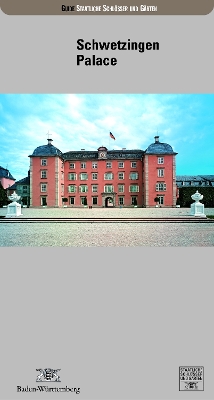A guide to the magnificent summer residence in Schwetzingen, originally a 14th century moated castle, which was enlarged in the 18th century under Prince Elector Carl Theodor and converted into a Rokoko jewel. The palace at the heart of the resplendent summer residence of Prince Elector Carl Theodor was originally built as a fourteenth-century moated castle. In the time up until the beginning of the eighteenth century, it was repeatedly rearranged, destroyed and rebuilt. It was then, during the rule of Carl Theodor, that the palace and its gardens were systematically extended. The Prince Elector not only had his own quarters sumptuously appointed, but initiated numerous major construction projects too. He had the northern quarter-circle pavilion added to the palace, where the famous court theatre was installed as well. The "bathhouse", a small palatial retreat tucked in a corner of the gardens, is a particular gem, with its original fittings and furnishings.
The last extension to the central part of the palace building was made in 1780. The palace, along with all the Palatinate territories to the east of the River Rhine, was ceded to the Margraves - later the Grand Dukes - of Baden in 1803, and these had the final modifications carried out in Empire style. In the more than two hundred years that have elapsed since then, the palace has never again been used as a ruler's residence. Visitors to Schwetzingen Palace today are treated to an excellent insight into the princely world of a summer residence from the rococo and early neo-classical period.
- ISBN10 3422020594
- ISBN13 9783422020597
- Publish Date 2 June 2009
- Publish Status Active
- Publish Country DE
- Imprint De Gruyter
- Edition 1., Aufl.
- Format Paperback
- Pages 72
- Language English
- URL https://degruyter.com/isbn/9783422020597
